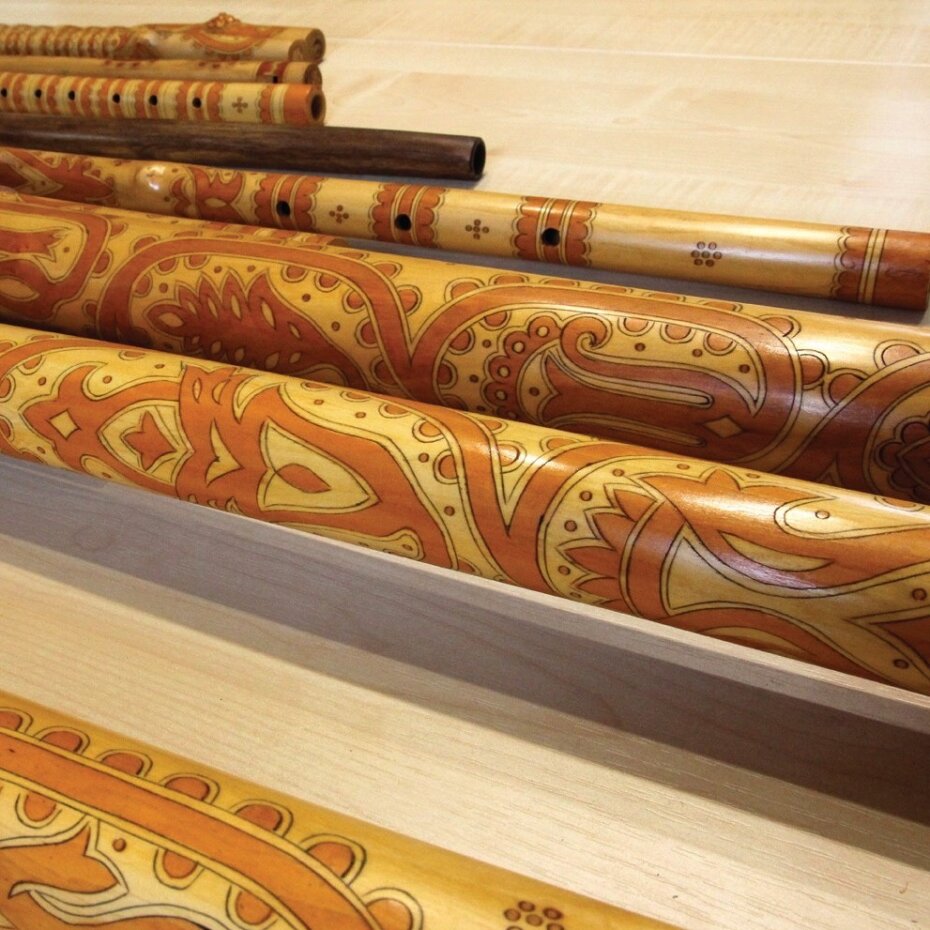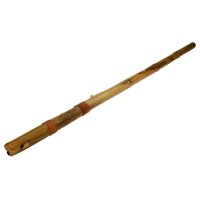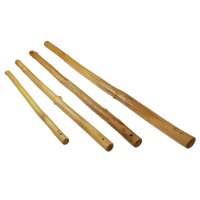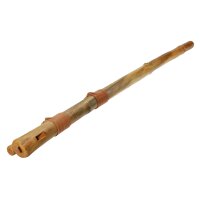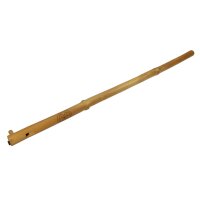In real life, Marco Trochelmann is a high school teacher for music and German. Originally, he is a piano player and drummer, but he discovered the Slovakian bass flute Fujara already during his university studies. The instrument put such a spell on him; he could not take it out of his hands. Until today, he has been producing several Fujara CDs and compositions for the instrument. Marco Trochelmann also conducts workshops on a regular basis and he operates a comprehensive website called tonfinder.de, dedicated to this extraordinary instrument. In an interview with Helen from DAN MOI he talks about his experiences as a cross-boarder musician in Slovakia and provides with an understanding of playing techniques and sound parameters of the Fujara. He says, “I have been living with the Fujara for over 20 years now and for me the instrument has still a lot to do with freedom, namely the freedom to explore and to research.”
How did you discover the Fujara?
Marco Trochelmann (MT): In 1997, I moved to Berlin to study music and German studies with the aim to become a teacher. My main instrument was the piano and besides that I practiced drumming and singing. I encountered the Fujara in a Berlin student digs. I intended to record some music with a fellow student. But he had a Fujara standing around, which a German instrument maker had stored at his place. The whole evening I tried out the instrument. There are still recordings with the Fujara and a dissected grand piano around from that evening. I was permitted to borrow the instrument. Finally, I had it for 10 years until the instrument maker wanted to have it back.
When it comes to playing techniques, what must one observe to play the Fujara well?
MT: You need to listen carefully. The instrument “tells” you, whether something is good or not. You need to practice in a focused and self-critical manner, play a lot and experiment, but more than anything else it is important to give yourself into the instrument, so that listening becomes eavesdropping.
The fingerings have different “meanings”. The air pressure is decisive for what overtone is being addressed. Over the years, I realized playing the Fujara is like archery. It is pretty easy to shoot an arrow, but to hit what you’d like to hit is much more difficult. The same is true with the Fujara. You can play nice tones rather quickly as you don’t need a specific “approach” if compared to other instruments, but to play the tone that you aim to play is the real challenge. The higher the tone the more difficult it gets. “Easy to play, hard to master” hits the nail on the head for the Fujara.
How are classical shepherd’s tunes characterized?
MT: The classical Slovakian shepherd’s song form begins with an initial blow (rozfuk) that has often a personal touch. The connoisseurs of the art are able to distinguish who is actually playing. After a deep “murmur” this flourish changes into a melody. The melody is merely hinted at and is almost played in a jazz-like manner. Listeners that are familiar with the song may already recognize what will be played. Then, the singing part without any instrumental accompaniment follows. In the interludes the Fujara sounds again and at the end the melody is played one more time with the so-called prefuk, also known as woosh. The tonality is usually mixolydian. On the diatonic flute the basis of the most melodies is also a scale that starts at the quint tone of the basic tone, for instance basic tone G – tonality of the melody: D mixolydian (D major with c instead of c sharp).
What experiences have you gathered at the Fujara festivals in Slovakia?
MT: At the times of the festivals a lot of stuff happened for me in my little Fujara world. In this respect, 2004, 2008, and 2013 were particularly important years for me. I got to know Pavol Smutny, Winfried Skrobek, Winne Clement, Dusan Holik, Milan Koristek, and many more. Fujara players, makers, friends – people I have communicated through the internet with in the preceding years, people that I may have met on Facebook or Youtube materialized right in front of me and there was a surprising and uncommon atmosphere of familiarity. Exchange, inspiration, motivation, and a sense that things were starting to happen. We played concerts in Detva and Zvolen and performed together on the big stage in Detva during the folklore festival in 2008.
I received quite some praise and acknowledgement for my extraordinary Fujara sound. Many were interested, but there were also critical voices as my play was very far away from the traditional Fujara music.
Then out of the blue Dusan Holik, the founder and main organizer of the international Fujara festival, passed away after a heart attack in 2017 and currently nobody knows when and where a next international Fujara festival is gonna happen in Slovakia.
What role does the Fujara play in the national culture of Slovakia?
MT: Today, the Fujara is known in the whole of the country, but it will be mainly played in the Podpol’anie region around Detva. There, the Fujara tradition is still alive. In my point of view, the fact that Slovakians re-discovered the instrument is connected to the UNESCO declaring the Fujara (and its traditional melodies) to the world culture heritage in 2005. That attracted international attention and produced a kind of feedback effect. Many makers realized that the Fujara was acknowledged in other countries and that is why young Slovakians also started to gain interest in the instrument. National groups began to use the Fujara as a status symbol and meanwhile it is also a symbol of Slovakian national pride.
Is there a scene for the Fujara on an international stage and has there been an upswing of the instrument in recent years?
MT: I believe, the first international Fujara wave happened at the end of the 1970s and the beginning of the 1980s. Back then, the instrument was quite popular with the world music scene in Switzerland. Gérard Widmer started quite early to combine it together with the didgeridoo player Willi Grimm.
Around the millennium the internet and finally the acknowledgement as UNESCO World Heritage in 2005 were 2 factors that extremely helped. I appear to belong to a group of musicians that have been riding on the second wave.
Who comes to you to learn the instrument?
MT: People who encountered the Fujara and who are deeply moved by it and its sound, and now look for a teacher. The stories how the people found their way to the instrument are totally different. Frankly, it is not quite normal to encounter the Fujara and then wanting to play it (except for people in Slovakia perhaps). At my workshops or my private lessons completely different people from diverse parts of the society find their way to me, but I experience all of them as curious people on a quest. Among them, of course we also have the professional musician who feels like getting to know the Fujara and who wants to save some time by getting clear guidance. The people are great and I like it a lot. The Fujara as a reason to meet seems to be a good reason.
